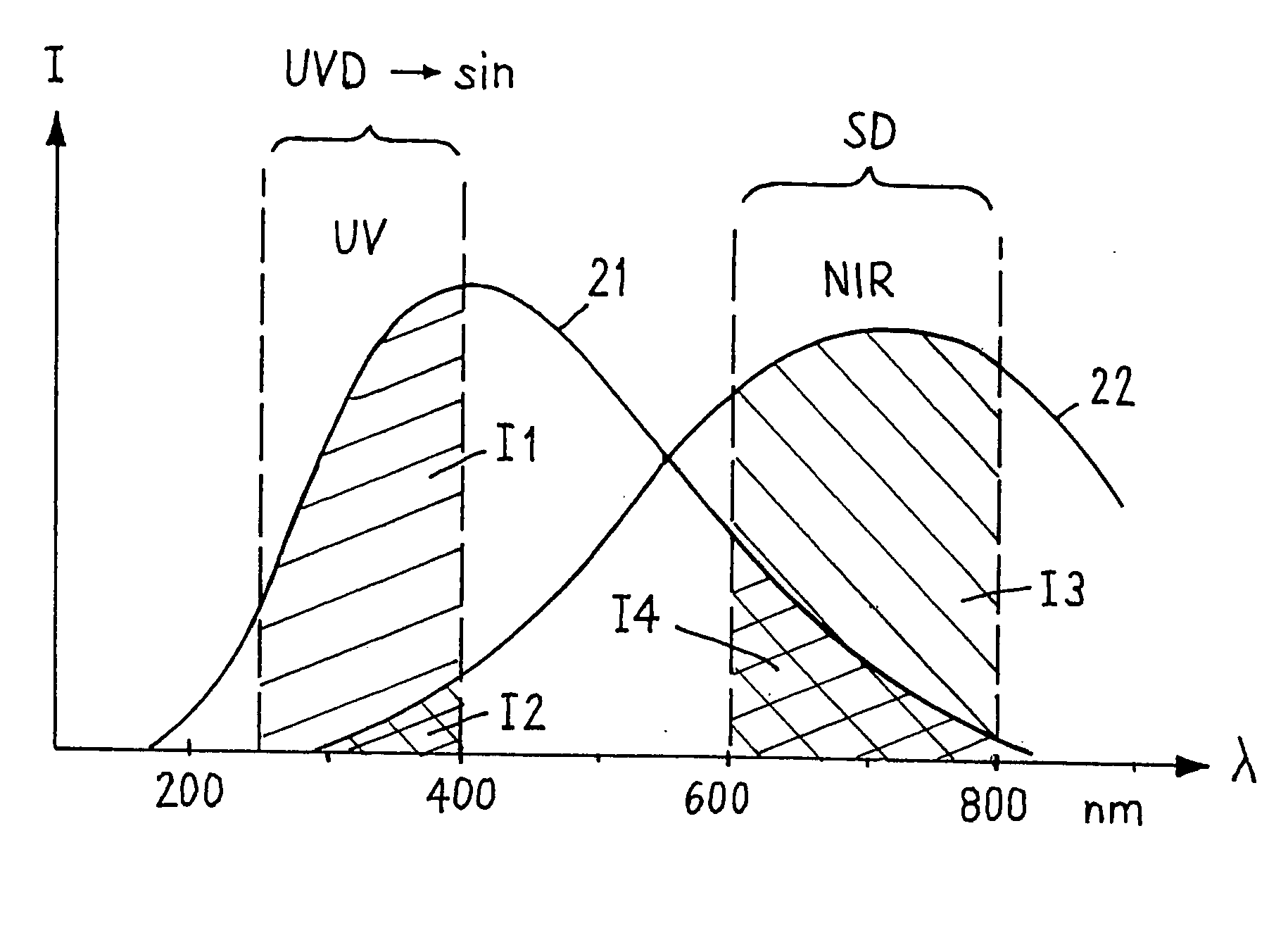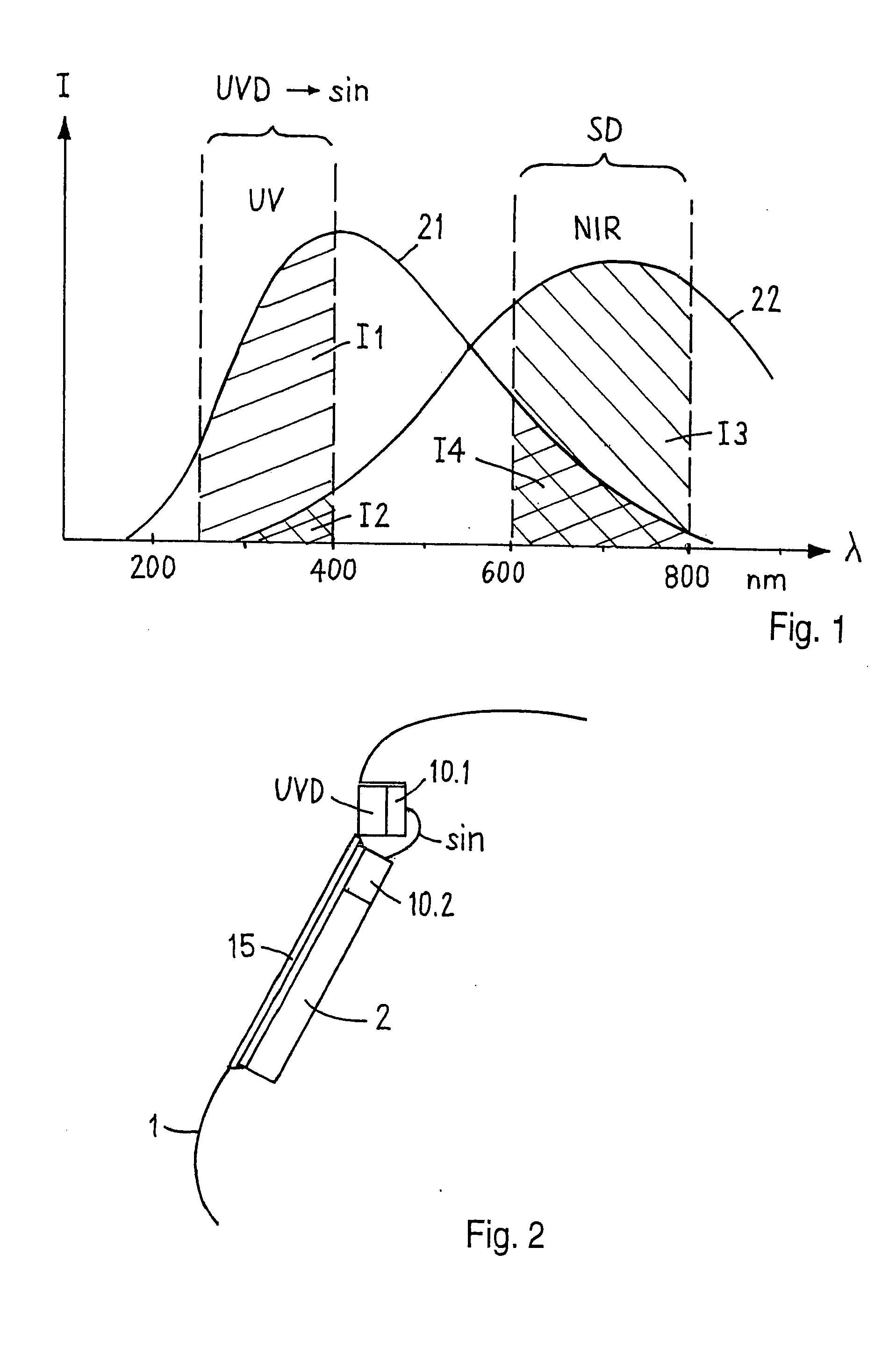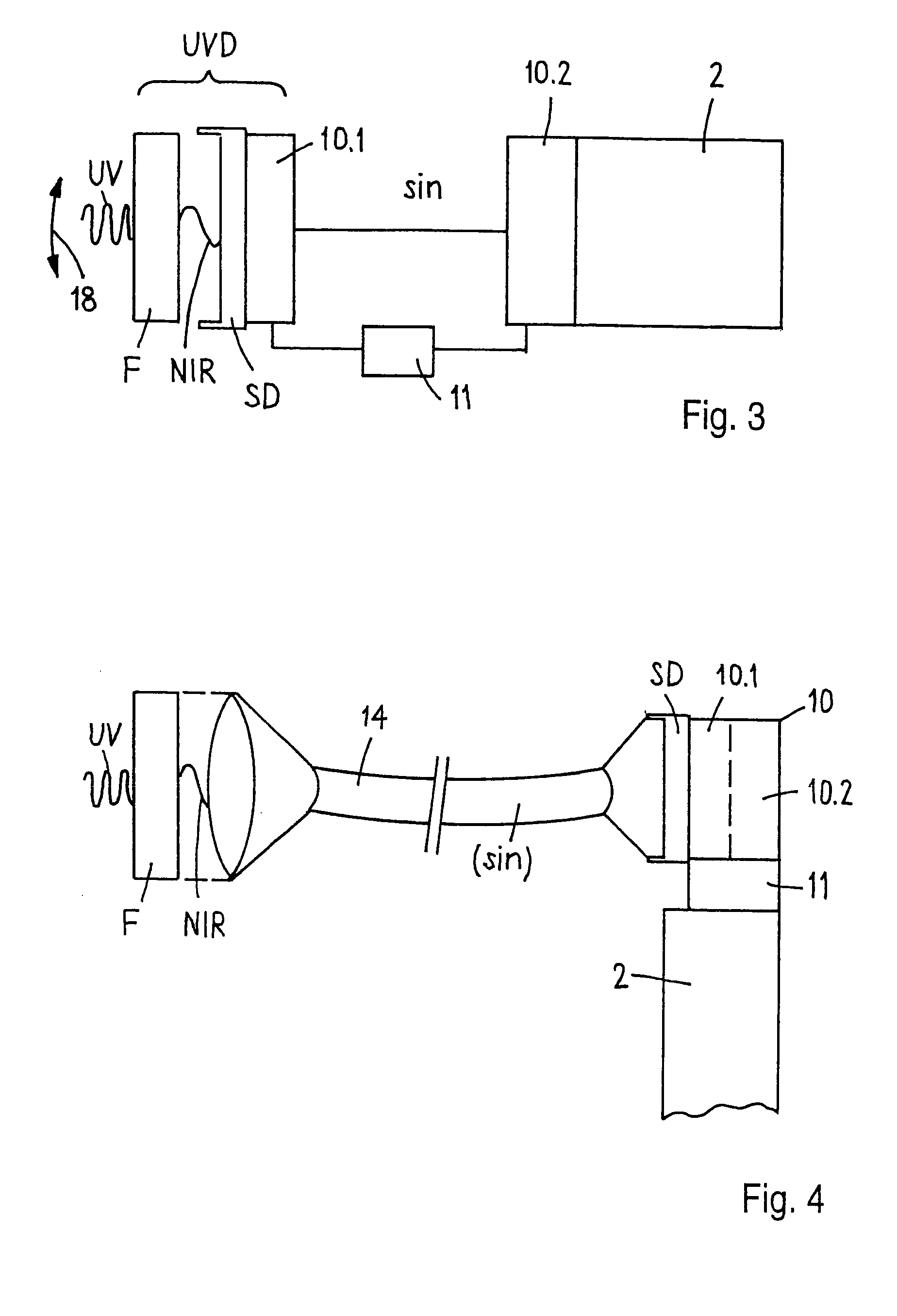Antiglare device for welding protective masks
a technology of antiglare and protective mask, which is applied in the direction of eye masks, photometry, garments, etc., can solve the problems of affecting the safety of welding equipment, so as to improve the safety of protection equipment, reduce the risk of interference, and reduce the risk of welding equipment damag
- Summary
- Abstract
- Description
- Claims
- Application Information
AI Technical Summary
Benefits of technology
Problems solved by technology
Method used
Image
Examples
Embodiment Construction
[0017]FIG. 1 schematically illustrates the spectral intensity distributions I(λ) for a welding light 21 with a high intensity proportion in the short-wave range and for an artificial light source as extraneous light 22 with a high proportion in the long-wave range. The welding light comprises a high intensity proportion I1 in the UV range, which is detected by a UV-detector UVD. The artificial light in contrast comprises a high intensity proportion I3 in the red range NIR, which is detected by a conventional Si-photo sensor SD. In the UV range the artificial light 22 comprises a small intensity proportion I2, while vice-versa the welding light 21 comprises a small intensity proportion I4 in the NIR range.
[0018] The UV-detector UVD, e.g., detects a short-wave range of 250-400 nm and the Si-photo detector SD a long-wave range of, e.g., 600-900 nm. With Si-sensors SD used up to now, therefore a relatively poor intensity ration I4 / I3 of welding light to extraneous light is detected, wh...
PUM
| Property | Measurement | Unit |
|---|---|---|
| wave-length | aaaaa | aaaaa |
| wave-length | aaaaa | aaaaa |
| wave-length | aaaaa | aaaaa |
Abstract
Description
Claims
Application Information
 Login to View More
Login to View More - R&D
- Intellectual Property
- Life Sciences
- Materials
- Tech Scout
- Unparalleled Data Quality
- Higher Quality Content
- 60% Fewer Hallucinations
Browse by: Latest US Patents, China's latest patents, Technical Efficacy Thesaurus, Application Domain, Technology Topic, Popular Technical Reports.
© 2025 PatSnap. All rights reserved.Legal|Privacy policy|Modern Slavery Act Transparency Statement|Sitemap|About US| Contact US: help@patsnap.com



